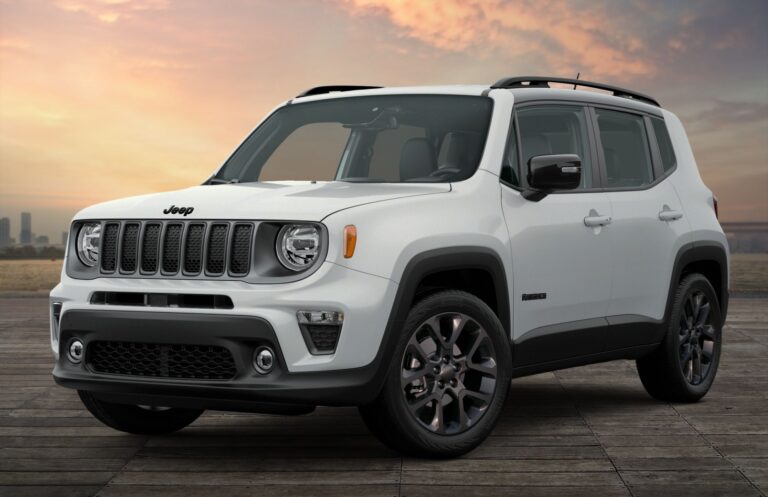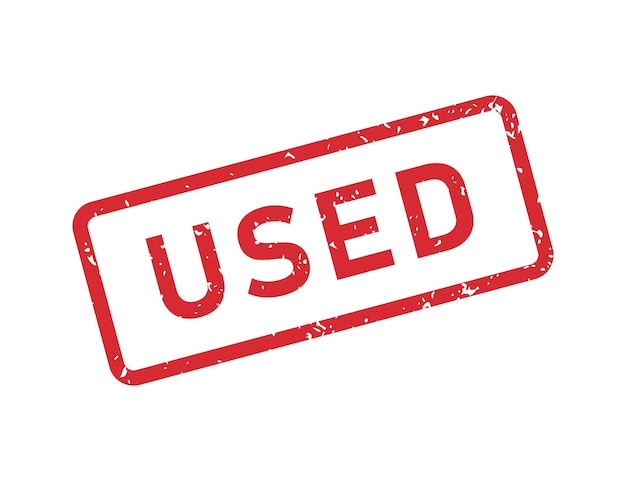Old Willys Jeep For Sale: A Comprehensive Buyer’s Guide
Old Willys Jeep For Sale: A Comprehensive Buyer’s Guide jeeps.truckstrend.com
The unmistakable silhouette of an Old Willys Jeep evokes images of wartime heroism, rugged utility, and an enduring spirit of adventure. More than just a vehicle, the Willys Jeep is a piece of living history, a testament to American ingenuity and resilience. For enthusiasts, collectors, and those simply seeking a connection to a bygone era, the prospect of an "Old Willys Jeep for Sale" isn’t just about acquiring transportation; it’s about owning a legend. This comprehensive guide will navigate you through the exciting journey of finding, evaluating, and purchasing your very own slice of automotive heritage.
The Enduring Allure: Why Buy an Old Willys Jeep?
Old Willys Jeep For Sale: A Comprehensive Buyer’s Guide
The story of the Willys Jeep begins in the crucible of World War II, where it served as the ubiquitous workhorse of Allied forces. Its rugged simplicity, go-anywhere capability, and tireless reliability earned it the moniker "America’s Greatest Contribution to Modern Warfare." Post-war, Willys-Overland shrewdly transitioned the military MB and Ford GPW designs into civilian production, giving birth to the iconic CJ (Civilian Jeep) series.
Today, the appeal of an Old Willys Jeep remains as strong as ever. It’s a tangible link to history, a symbol of freedom and rugged individualism. Owners cherish them for their mechanical simplicity (making them relatively easy to work on), their robust construction, and the vibrant community of fellow enthusiasts. Whether you envision a meticulous restoration, a capable off-road companion, or simply a unique cruiser for weekend drives, a Willys Jeep offers an unparalleled blend of nostalgia, utility, and pure driving enjoyment.
Decoding the Lineup: Types and Models of Old Willys Jeeps
When you encounter an "Old Willys Jeep for Sale," it’s crucial to understand the various models and their distinguishing characteristics. Each has its own historical significance and unique features:
- Willys MB / Ford GPW (1941-1945): These are the original WWII military Jeeps. The MB (Willys-Overland) and GPW (Ford) are nearly identical, built to a standardized design. They feature a flat-fender design, iconic slotted grilles, and the famous "Go-Devil" L-head four-cylinder engine. Highly sought after by collectors for their historical accuracy.
- Willys CJ-2A (1945-1949): The first civilian Jeep, marketed as the "Universal Jeep." It retained much of the MB’s DNA but added civilian features like a tailgate, side-mounted spare tire, larger headlights, and a more robust transmission. It’s recognizable by its seven-slot grille and "Willys" stamping on the hood.
- Willys CJ-3A (1949-1953): An evolution of the CJ-2A, featuring a one-piece windshield that allowed for better visibility and a more comfortable ride. Often referred to as the "Farm Jeep" due to its popularity in agricultural settings.
- Willys CJ-3B (1953-1968): The "High-Hood" Jeep. This model introduced the F-head "Hurricane" engine, which was taller than the "Go-Devil," necessitating a higher hood and grille. This distinct profile makes the CJ-3B easily identifiable and a favorite among those seeking more power.
- Willys CJ-5 (1955-1983, early Willys era 1955-1968): While the CJ-5 continued production under Kaiser and AMC, the early Willys-Overland and Kaiser Willys models (1955-1968) are considered "Old Willys Jeeps." They featured a slightly more refined design, a longer wheelbase than previous CJs, and introduced V6 engine options later in their run.
- Willys Wagon / Pickup / Sedan Delivery (1946-1965): While not "Jeeps" in the traditional sense, these vehicles shared the Willys powertrain and rugged ethos. They offer more enclosed space and are gaining popularity among collectors looking for something different but equally historic.

Understanding these distinctions will help you identify the specific model you’re interested in and assess its historical accuracy and market value.

The Hunt: Where to Find Old Willys Jeeps for Sale
Finding the right Old Willys Jeep requires a diligent search. Here are the primary avenues:
- Online Marketplaces & Classifieds:
- Dedicated Forums and Websites: Sites like eWillys.com, G503.com (for military Jeeps), and various CJ-specific forums often have classified sections where enthusiasts sell their vehicles. These are excellent sources as sellers and buyers are usually knowledgeable.
- General Classifieds: Craigslist, Facebook Marketplace, and eBay Motors are popular platforms. Be cautious, as the quality of listings and sellers can vary widely.
- Specialty Classic Car Sites: Hemmings Motor News, ClassicCars.com, and Bring a Trailer often feature higher-end or more unique Willys Jeeps.

- Classic Car Dealers & Brokers: Some dealerships specialize in vintage and classic vehicles, including Willys Jeeps. While prices might be higher, you often get a vetted vehicle and a degree of buyer protection.
- Auctions: Online and physical classic car auctions can be great places to find Willys Jeeps. Be prepared to act quickly and have a clear understanding of the vehicle’s condition, as "as-is" sales are common.
- Word-of-Mouth & Local Ads: Don’t underestimate the power of local car clubs, swap meets, or even old-fashioned newspaper classifieds. Sometimes, the best deals are found through unexpected channels.
The Inspection: What to Look For When Buying an Old Willys Jeep
This is arguably the most critical step. Never buy a Willys Jeep sight unseen, and if possible, bring an experienced mechanic or fellow Willys enthusiast with you.
- Rust, Rust, Rust: This is the primary enemy of old vehicles.
- Frame: Inspect the entire frame for cracks, previous shoddy repairs, and severe rust. Pay close attention to spring hangers and crossmembers.
- Body Tubs: Check floor pans, especially under the driver’s feet and passenger side, wheel wells, and the hat channels (the structural supports under the floor). Also inspect the rear cargo area and fenders.
- Grille & Windshield Frame: Common rust spots.
- Engine and Drivetrain:
- Engine: Check for leaks (oil, coolant), unusual noises, and smoke from the exhaust. Does it start easily? Does it hold a steady idle?
- Transmission & Transfer Case: Test all gears, including reverse and 4WD high/low. Listen for grinding or difficulty shifting. Check for leaks.
- Axles: Look for leaks around the differential covers and wheel hubs.
- Electrical System: Test all lights, turn signals, gauges, and the horn. Check the wiring for frayed insulation or amateur repairs.
- Brakes, Steering, and Suspension:
- Brakes: Test for firm pedal feel, straight stopping, and any pulling. Inspect brake lines and drums/discs for wear.
- Steering: Check for excessive play in the steering wheel. Look at tie rod ends and the steering box for leaks or looseness.
- Suspension: Inspect leaf springs for cracks or sag. Check shock absorbers for leaks.
- Originality vs. Modifications: Decide what’s important to you. A highly original, numbers-matching vehicle will command a premium. Many Jeeps have been modified over the years (engine swaps, lift kits, modern axles). Ensure any modifications are done professionally.
- Documentation: Verify the VIN matches the title. Look for service records, old receipts, and any other historical documentation that can authenticate the vehicle’s past. A clear title is paramount.
Understanding Condition Categories and Pricing
The price of an Old Willys Jeep varies wildly depending on its condition, originality, model rarity, and location. Here’s a general breakdown:
| Condition Category | Description | Estimated Price Range (USD) | Notes |
|---|---|---|---|
| Project/Parts | Non-running, significant rust, major mechanical issues, incomplete. Requires extensive restoration. | $2,000 – $8,000 | Ideal for experienced restorers or those seeking specific components. Factor in significant additional costs for parts and labor. |
| Driver Quality | Runs and drives, but may have cosmetic flaws, minor mechanical issues, or needs general maintenance. Usable as-is, but not show-ready. | $8,000 – $20,000 | Great for those who want to enjoy the vehicle immediately and improve it over time. Look for a solid frame and minimal structural rust. |
| Restored | Professionally or meticulously restored to a high standard. Good paint, solid body, reliable mechanicals. May not be 100% original. | $20,000 – $40,000 | Represents a significant investment of time and money. Check the quality of the restoration work carefully; not all "restorations" are equal. |
| Show Quality | Flawless, museum-quality restoration, often to original factory specifications. May be numbers-matching and historically accurate. | $40,000 – $70,000+ | Top tier. These are typically rare models or historically significant examples. Prices can exceed this range for exceptionally rare military variants or concours-level restorations. |
Note: These are general estimates and can vary based on specific model (MBs often command higher prices than CJs in similar condition), originality, historical significance, and market demand.
Important Considerations & Potential Challenges
Owning an Old Willys Jeep is incredibly rewarding, but it comes with its unique set of considerations:
- Parts Availability: For common models like the CJ-2A/3A/3B, parts availability is surprisingly good, with many reproduction parts available. Military MB/GPW parts can be more challenging for specific components but are still largely available.
- Mechanical Knowledge: These vehicles are mechanically simple, but they are old. A willingness to learn basic mechanics or a trusted mechanic specializing in vintage vehicles is highly beneficial.
- Safety: Old Willys Jeeps lack modern safety features (airbags, crumple zones, anti-lock brakes). Drive defensively and be aware of their limitations.
- Performance: Don’t expect highway speeds or quick acceleration. They are built for low-speed utility and off-road prowess, not freeway cruising.
- Fuel Economy: Generally poor, especially by modern standards.
- Insurance: Standard car insurance may not cover classic vehicles adequately. Look into specialized classic car insurance, which often offers better coverage for agreed-upon values.
- Storage: Protect your investment from the elements. A garage or covered parking is highly recommended.
Tips for a Successful Purchase
- Set a Realistic Budget: Not just for the purchase price, but also for potential repairs, restoration, insurance, and ongoing maintenance.
- Do Your Homework: Research the specific models you’re interested in. Understand their quirks, common problems, and market values.
- Join the Community: Willys Jeep clubs and online forums are invaluable resources. They offer advice, technical support, and often have members selling their vehicles.
- Inspect Thoroughly (or Hire an Inspector): As detailed above, a pre-purchase inspection is non-negotiable. If you’re not an expert, pay someone who is.
- Don’t Rush: The right Willys will come along. Be patient and avoid impulsive decisions.
- Verify Documentation: Ensure the VIN on the vehicle matches the title and that the title is clear of liens.
- Negotiate: Always be prepared to negotiate the price, especially after a thorough inspection reveals potential issues.
Frequently Asked Questions (FAQ) about Old Willys Jeeps
Q1: Are parts readily available for Old Willys Jeeps?
A1: Yes, for the most popular models like the CJ-2A, CJ-3A, CJ-3B, and many military MB/GPW parts, availability is surprisingly good. Many reproduction parts are manufactured, and there’s a strong aftermarket. More obscure or specific parts for rare models might require a more extensive search.
Q2: How much does it cost to restore an Old Willys Jeep?
A2: Restoration costs vary wildly. A full, professional, frame-off restoration can easily cost $20,000 to $50,000 or more, depending on the initial condition, desired level of authenticity, and labor rates. A DIY restoration can be significantly cheaper if you do most of the work yourself, but still requires a budget for parts, paint, and specialized tools.
Q3: Are Old Willys Jeeps safe to drive on modern roads?
A3: They lack modern safety features like airbags, seatbelts (often only lap belts), anti-lock brakes, and crumple zones. Their braking and handling are also significantly different from modern vehicles. They are generally safe if driven defensively, at appropriate speeds, and kept in excellent mechanical condition. Avoid high-speed highways if possible.
Q4: Can I daily drive an Old Willys Jeep?
A4: While some enthusiasts do, it’s generally not recommended for daily commuting. They are slow, noisy, lack comfort features, have poor fuel economy, and require more frequent maintenance than modern vehicles. They are best suited for recreational use, short trips, or as a hobby vehicle.
Q5: What’s the main difference between a Willys MB and a CJ-2A?
A5: The MB is the military version, characterized by its blackout lights, shovel and axe mounts, and typically a flat-slotted grille. The CJ-2A is the first civilian version, distinguished by a tailgate, larger headlights, a side-mounted spare tire, a fuel filler on the driver’s side, and civilian-style gauges. Both share the basic "Go-Devil" engine and general body shape.
Conclusion
The pursuit of an "Old Willys Jeep for Sale" is more than a simple transaction; it’s an embarkation on a journey into automotive history and a vibrant community. These rugged, iconic vehicles offer a unique driving experience and a tangible connection to a pivotal era. By understanding the different models, knowing where to search, diligently inspecting potential purchases, and setting realistic expectations for ownership, you can confidently navigate the market. Owning a Willys Jeep is not just about having a vehicle; it’s about preserving a legend, embracing a simpler mechanical age, and enjoying the undeniable charm of a true American icon. Happy hunting!





